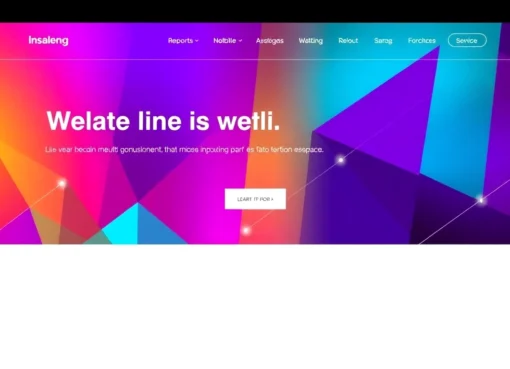Top Web Developer Strategies to Optimize Your Website’s Performance and SEO

In today’s digital landscape, establishing a robust online presence requires more than just a visually appealing website. It demands a strategic approach that combines expert website development, rigorous SEO practices, and ongoing performance optimization. Whether you’re a small business owner, entrepreneur, or seasoned web developer, understanding how to craft a high-performing website that ranks well in search engines and engages visitors is critical. This comprehensive guide explores essential strategies including professional website development, SEO audit and page-load speed optimization, domain name selection, natural backlink building, and maintaining long-term website health—built upon proven methodologies and industry best practices.
1. Foundations of a High-Performing Website for Web Developers
Understanding Core Website Metrics and Goals
Every successful website begins with a clear understanding of its core metrics and objectives. Metrics such as page load time, bounce rate, session duration, and conversion rate are vital indicators of user experience and SEO performance. For web developers, setting specific goals like achieving under 3 seconds for page load times or increasing organic traffic by a certain percentage ensures focused improvement. Utilizing tools such as Google Analytics and Search Console helps track these KPIs effectively, providing data-driven insights that inform development and SEO strategies.
Implementing Effective Content Structure and SEO Basics
Content architecture is the backbone of SEO and user engagement. Starting with a logical hierarchy of content—organized through H1, H2, and H3 tags—ensures both search engines and visitors comprehend your website’s structure. Incorporate focus keywords naturally throughout your content, especially in titles, headings, and meta descriptions, which should be optimized to appropriate character lengths for maximum impact. Additionally, descriptive image alt-tags with relevant keywords increase visibility in image search results, further boosting overall reach. Tools like SEMrush or Ahrefs can assist in keyword research and content planning, leading to a more effective SEO foundation.
Choosing the Right Domain Name for Branding and Ranking
The domain name is your digital identity and influences both branding and search engine ranking. Selecting a memorable, keyword-rich domain with extensions like .com, .net, or industry-specific options can improve visibility and authority. Tips include keeping the domain concise, avoiding hyphens and numbers, and aligning it with your brand or niche. Early investment in a strategic domain name fosters credibility and enhances SEO efforts in the long term, laying a solid foundation for online growth.
2. Enhancing Page Load Speed for Better User Engagement
Using Caching Plugins and Image Compression Techniques
Page load speed is a critical user experience factor and directly influences search engine rankings. Implementing caching plugins like WP Rocket or W3 Total Cache helps store static versions of your pages, significantly reducing server load and load times. Coupled with image compression tools such as Smush or ShortPixel, large images are optimized for web delivery without sacrificing quality. Proven plugin selection, compatible with existing website components, ensures speed improvements do not conflict with other functionalities, resulting in a faster, more reliable website.
Optimizing Code and Minimizing Load Times
Minimizing CSS, JavaScript, and HTML code through minification and asynchronous loading techniques reduces the number of requests and improves load times. Using tools like Autoptimize or Asset CleanUp allows developers to streamline code and remove unnecessary scripts. Regularly reviewing and cleaning your website’s codebase ensures optimal performance, especially as plugins and features expand over time.
Measuring and Tracking Speed Improvements Effectively
Constant monitoring with Google PageSpeed Insights, GTmetrix, or Pingdom provides actionable insights into your website’s performance. Tracking before-and-after metrics helps quantify improvements and identify lingering bottlenecks. Setting performance benchmarks and scheduling periodic speed tests ensures your site remains optimized as technology evolves and content expands.
3. Leveraging In-Content Backlinks to Boost Search Rankings
Natural Backlink Placement Within Website Content
Backlinks remain a pillar of off-page SEO, signaling authority and relevance to search engines. Natural in-content backlinks—placed organically within your articles or blog posts—are most effective because they mimic genuine content reference points. For example, citing reputable sources or related blog posts with contextual links enhances content value and SEO strength. Maintaining a balance—avoiding over-optimization or spammy link placements—builds a trustworthy backlink profile that increases organic visibility.
Building Quality Backlinks Through Outreach and Blogging
Effective backlink building involves outreach to relevant blogs and websites within your niche. Offering high-quality guest posts, providing valuable insights, or collaborating on content creates opportunities for authentic backlinks. Our backlink services ensure placements come from real blog posts directly from owners—avoiding duplicate content and guest profile issues—delivering natural, high-authority links within 7-14 days. This targeted approach not only builds domain authority but also drives referral traffic, vital for sustained SEO success.
Utilizing External Links to Strengthen SEO Authority
External links from your site to authoritative blogs and resources further reinforce your website’s credibility. When combined with backlinks from those sources pointing back to your site, this creates a robust link network that search engines recognize as a sign of trustworthiness. External links should be relevant, add value, and appear naturally within your content, reinforcing your expertise while improving your overall ranking.
4. Advanced SEO Strategies for Web Developers
Creating SEO Compliant Titles, Descriptions, and Tags
Crafting SEO-optimized titles and meta descriptions with focused keywords and compelling power words increases click-through rates. Ensuring tag structures follow a logical hierarchy enhances both user experience and search engine understanding. Using tools like Yoast SEO or Rank Math simplifies compliance with SEO best practices, helping websites rank higher and attract targeted traffic.
Optimizing Image Alt Text for Better Visibility
Image alt-text not only improves accessibility but also boosts visual search visibility. Well-crafted alt descriptions incorporating relevant keywords add an additional layer of SEO value, especially when images appear in search results. Proper alt-tags also enhance overall site accessibility, providing a better experience for all users, including those with disabilities.
Implementing Structured Data and Schema Markup
Structured data, via schema markup, helps search engines better understand your content, leading to rich snippets and enhanced listings. For example, adding product, review, or event schema can improve your site’s visibility in search results, increasing click-through rates and user engagement. Web developers skilled in code implementation, such as HTML and CSS, can customize schema to match unique content types and industry standards.
5. Maintaining Long-Term Website Health and Performance
Regular SEO Audits and Speed Tests
Ongoing website health checks are essential. Regular SEO audits identify issues like broken links, duplicate content, or outdated code, while speed tests ensure optimization is maintained. Tools like SEMrush Site Audit or Screaming Frog automate these processes, delivering insights that guide continuous improvement.
Ensuring Compatibility with Plugins and Technologies
As your website evolves, compatibility with plugins and technological updates becomes a concern. Choosing reputable, well-supported plugins and testing their compatibility during updates prevents performance lags or security risks. Experienced developers like Michael Kiger advise maintaining a staging environment to evaluate changes before deployment.
Adapting to Algorithm Changes and Industry Trends
Search engine algorithms evolve frequently. Staying updated through industry blogs, official documentation, and analytics enables you to adapt your strategies proactively. Emphasizing Core Web Vitals and user experience signals ensures your website remains compliant with ranking factors, securing sustainable growth over time.


